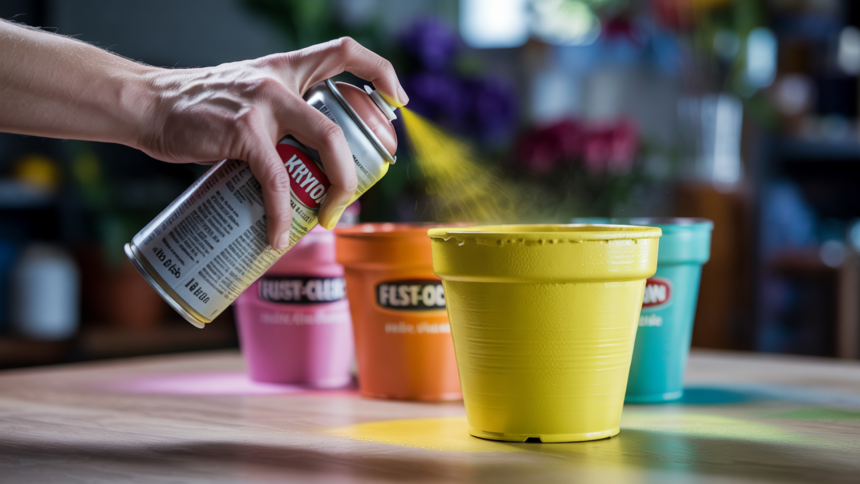Have you ever looked at a plastic item and wished it had a different color? I know I have. This blog will show you how to change old plastic items into fresh, new-looking pieces.
Painting plastic items can save you money and help the planet, too. Instead of buying new things, you can fix up what you already have with just some paint and a few simple tools.
The right paint job can make plastic last longer and look better. With good prep work, you can turn dull plastic into something you’ll want to show off to friends and family.
In this blog, I’ll walk you through each step of the plastic painting process. You’ll also learn which paints work best, how to prep surfaces, and tips for a smooth finish.
Why Paint Plastic?
Painting plastic lets you refresh old items without spending much money. You can update the look of toys, furniture, or household items that still work fine but need a visual boost.
A fresh coat of paint can turn a faded plastic chair into a standout piece or make old storage bins match your home style.
When you paint plastic instead of throwing it away, you help cut down on waste. Plus, a good paint job can help protect plastic from scratches and sun damage, making your items last even longer.
This small effort extends the life of your plastic items and keeps them out of landfills.
Understanding Plastic Types
When working with plastic, knowing what type you have matters.
- PVC is stiff and often found in pipes and some toys.
- Polyethylene comes in both hard and soft forms – think milk jugs and shopping bags.
- Polypropylene can handle heat well, which is why it’s used for food containers.
- Polystyrene makes up foam cups and clear plastic cases.
Paint Compatibility
Different plastics need different paint types.
- PVC accepts most paints well after proper prep work.
- Polyethylene and Polypropylene are slick and need special primers to help paint stick.
- Be careful with Polystyrene – some spray paints can cause it to melt, so water-based paints are safer.
Always test your chosen paint on a small, hidden area of your plastic item first. This quick check can help you avoid poor results or damage to your project.
Top 5 Paints for Plastic Surfaces
1. Krylon Fusion All-In-One Spray Paint (Matte White, 12 oz)
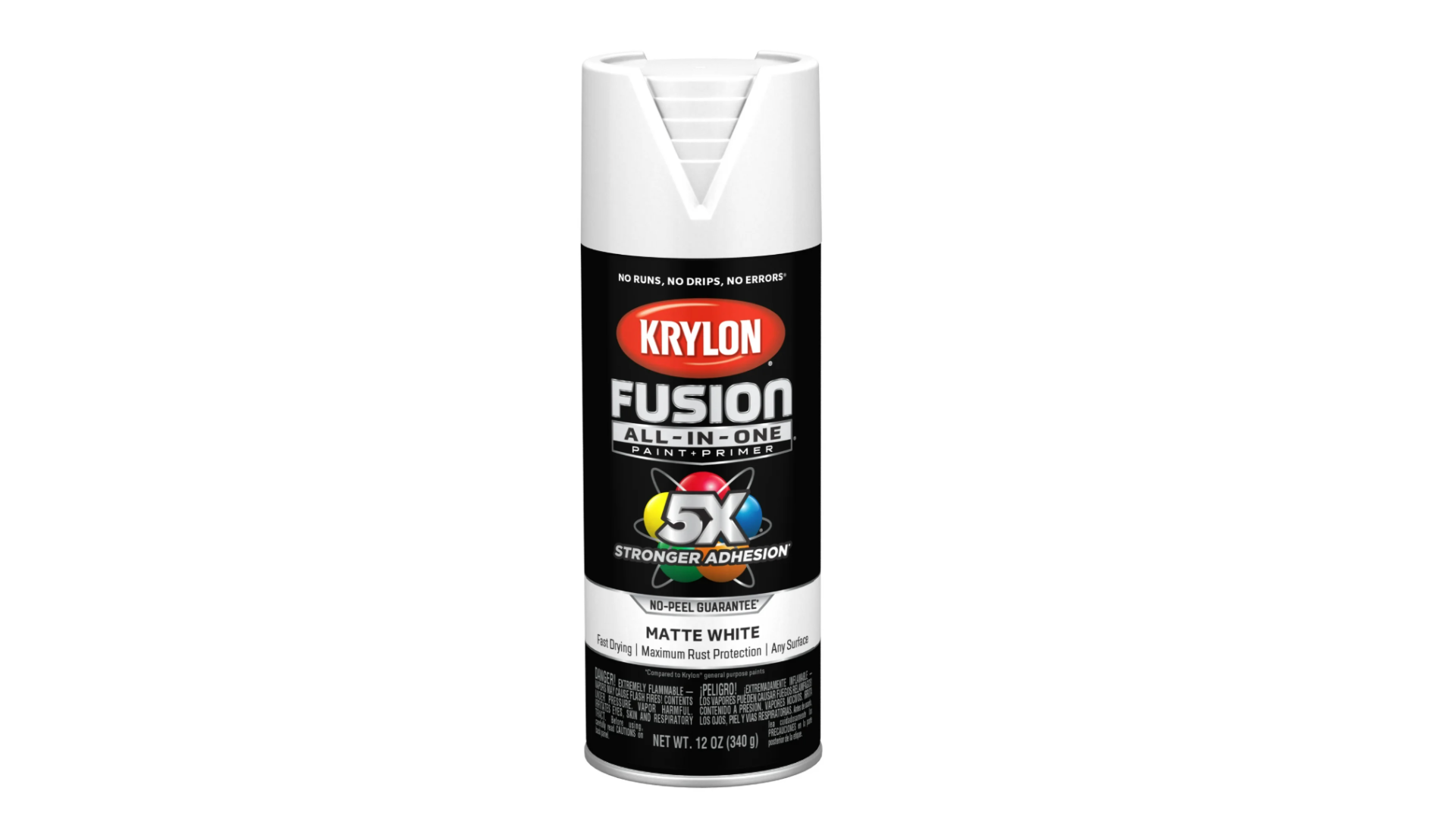
- Sticks to tough surfaces like plastic, wood, metal, and PVC without sanding or priming needed
- Dries in just 20 minutes with no runs or drips, and can be sprayed from any angle
- Provides strong rust protection for both indoor and outdoor projects
- Covers up to 25 square feet with one 12-oz can
- Features a soft, modern matte white finish that adds warmth to projects
2. Rust-Oleum Painter’s Touch 2X Ultra Cover Spray Paint
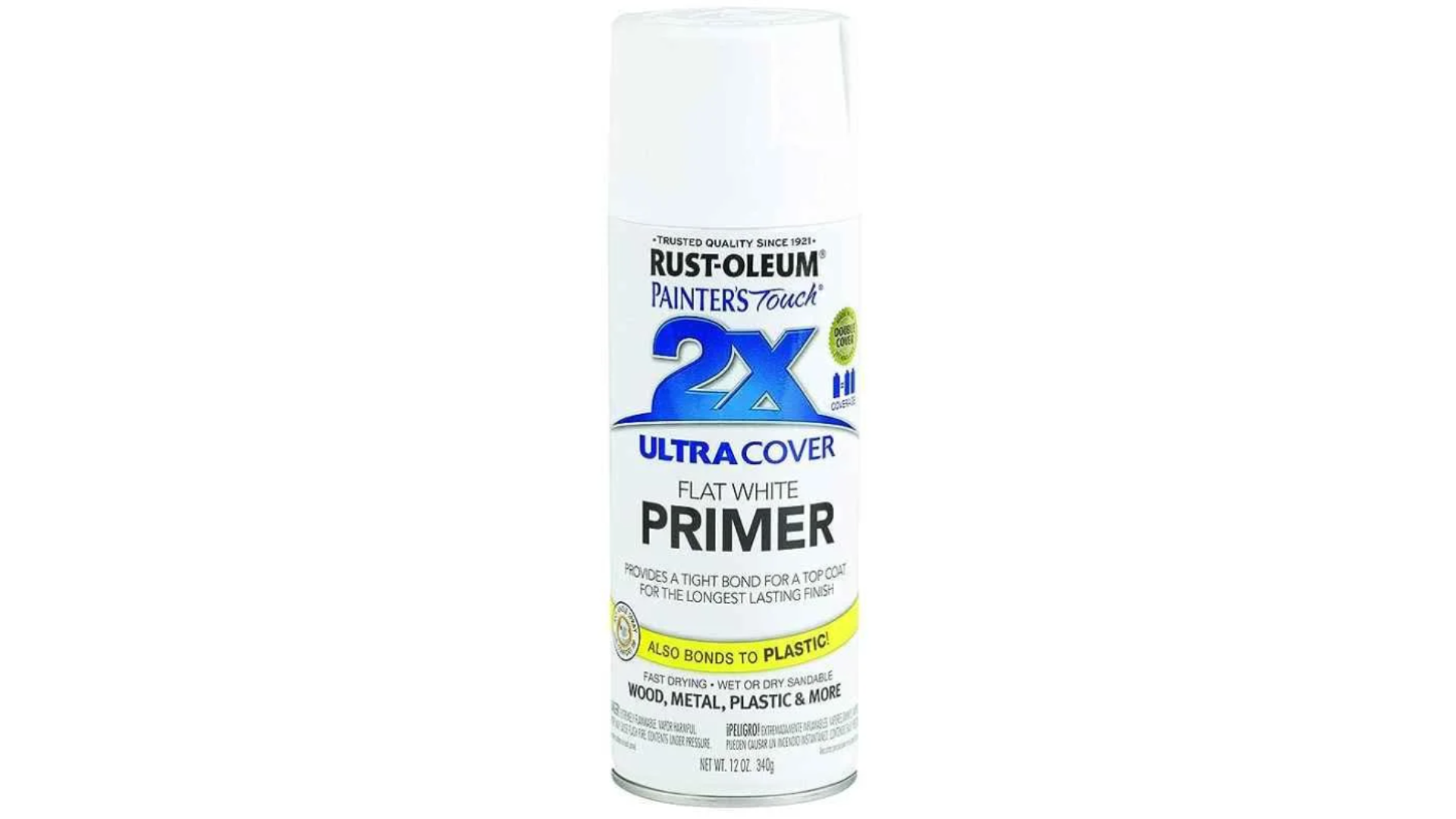
- Covers twice as much area as standard primers, saving time and money on projects
- Sticks well to wood, metal, plastic, and other surfaces without extra prep work
- Spray can format allows for smooth, even coating without brush marks or streaks
- Creates a perfect base that helps top coats look better and stay on longer
- Dries to a flat matte white finish that can be painted over quickly
3. Dupli-Color HVP112-6 PK Medium Blue Vinyl and Fabric Coating
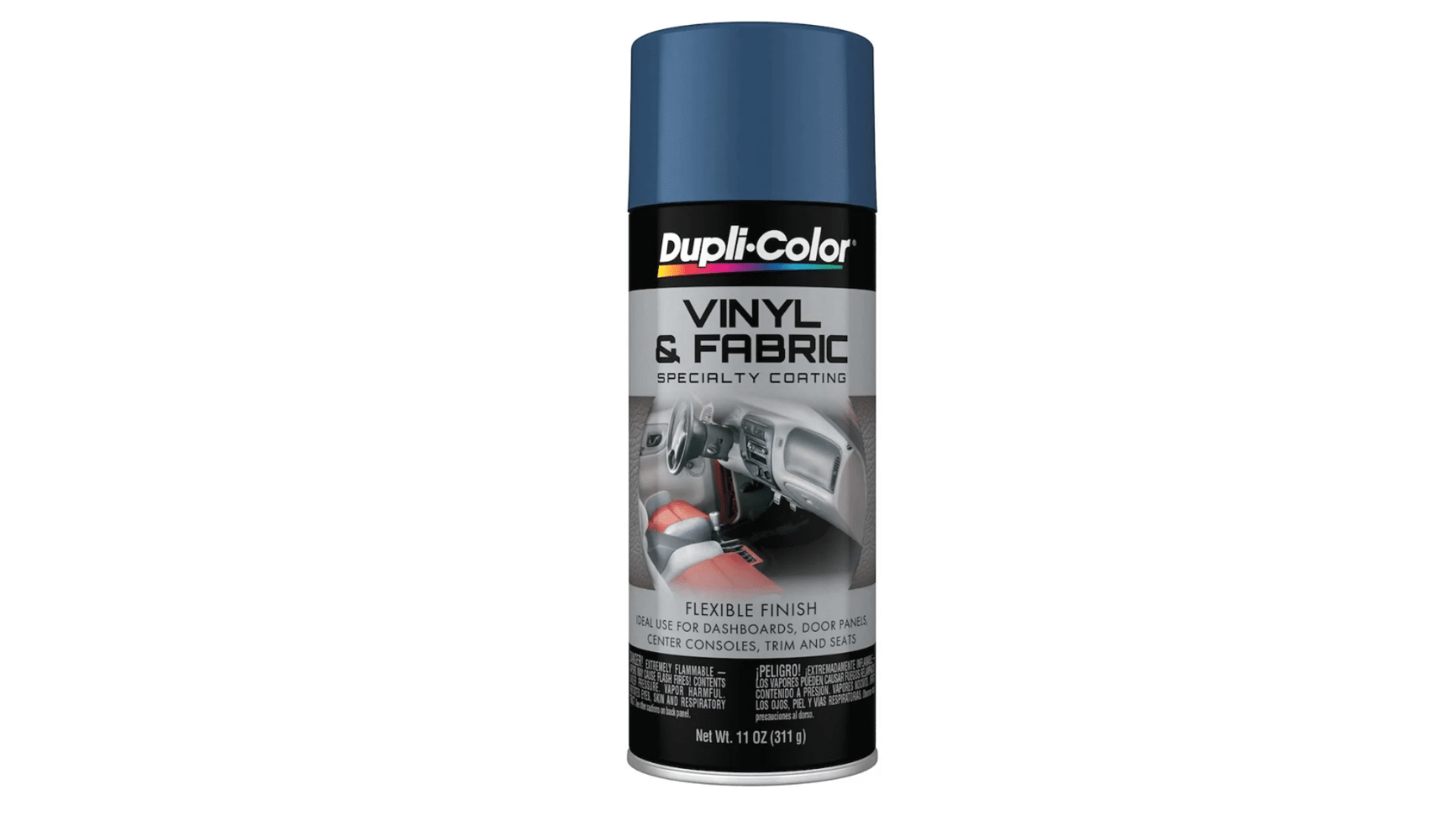
- Brings new color and a fresh look to worn vinyl surfaces
- Bonds directly with the vinyl, creating a lasting, permanent finish
- Stays flexible after drying, so it won’t crack, chip, or peel with use
- Works perfectly on car interiors, including seats, dashboards, and door panels
- Stands up to daily use and holds up well against wear and tear
4. Rust-Oleum Specialty Paint for Plastic Spray
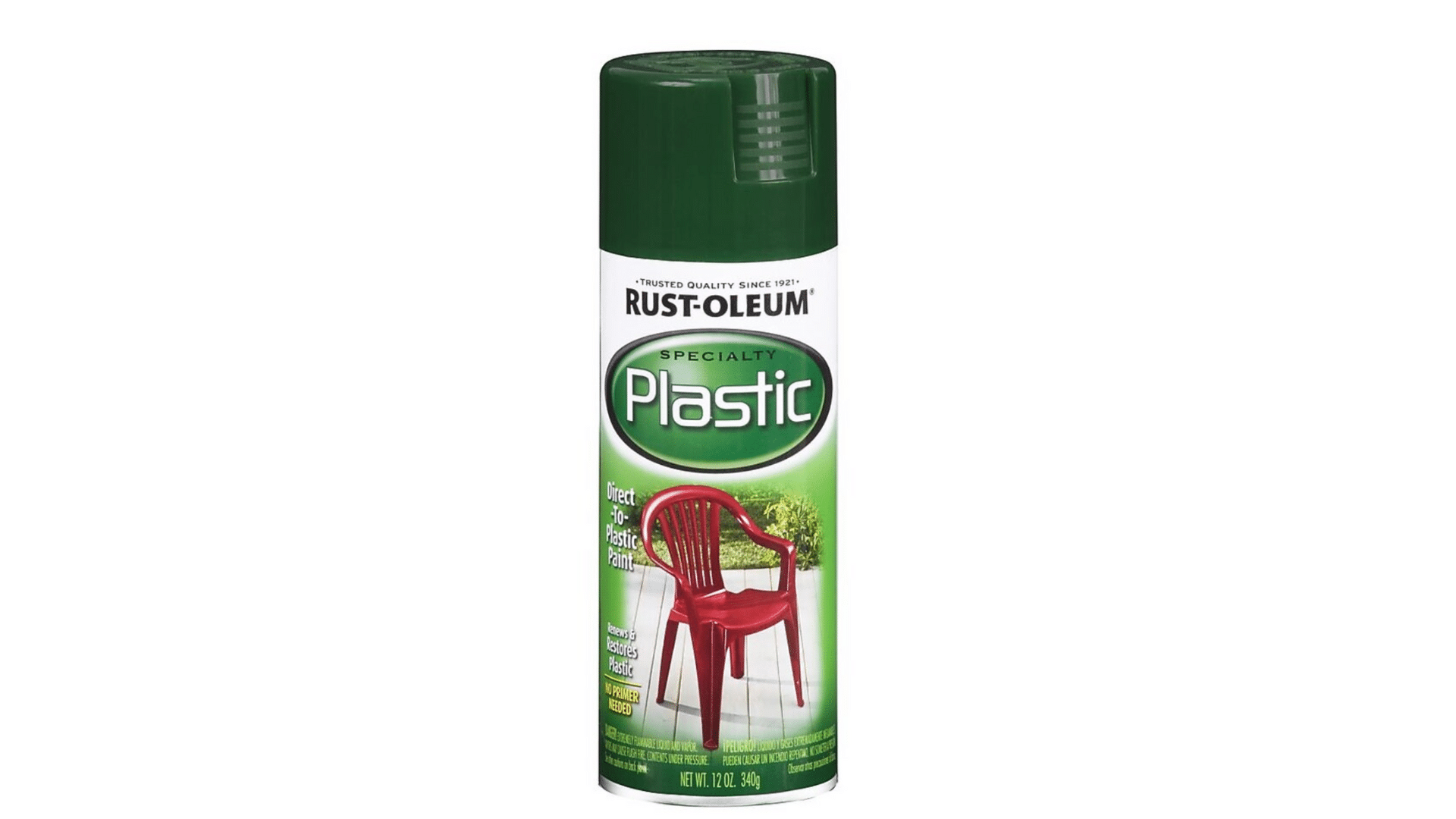
- Updates and restores plastic items in a single step with no primer needed
- Made specifically for plastic surfaces like lawn chairs, mailboxes, and storage bins
- Oil-based formula sticks directly to plastic with excellent adhesion
- Dries within 20-30 minutes and covers up to 10 square feet per can
- Provides a glossy finish that makes old plastic look new again
5. Krylon Fusion For Plastic Aerosol Spray Paint
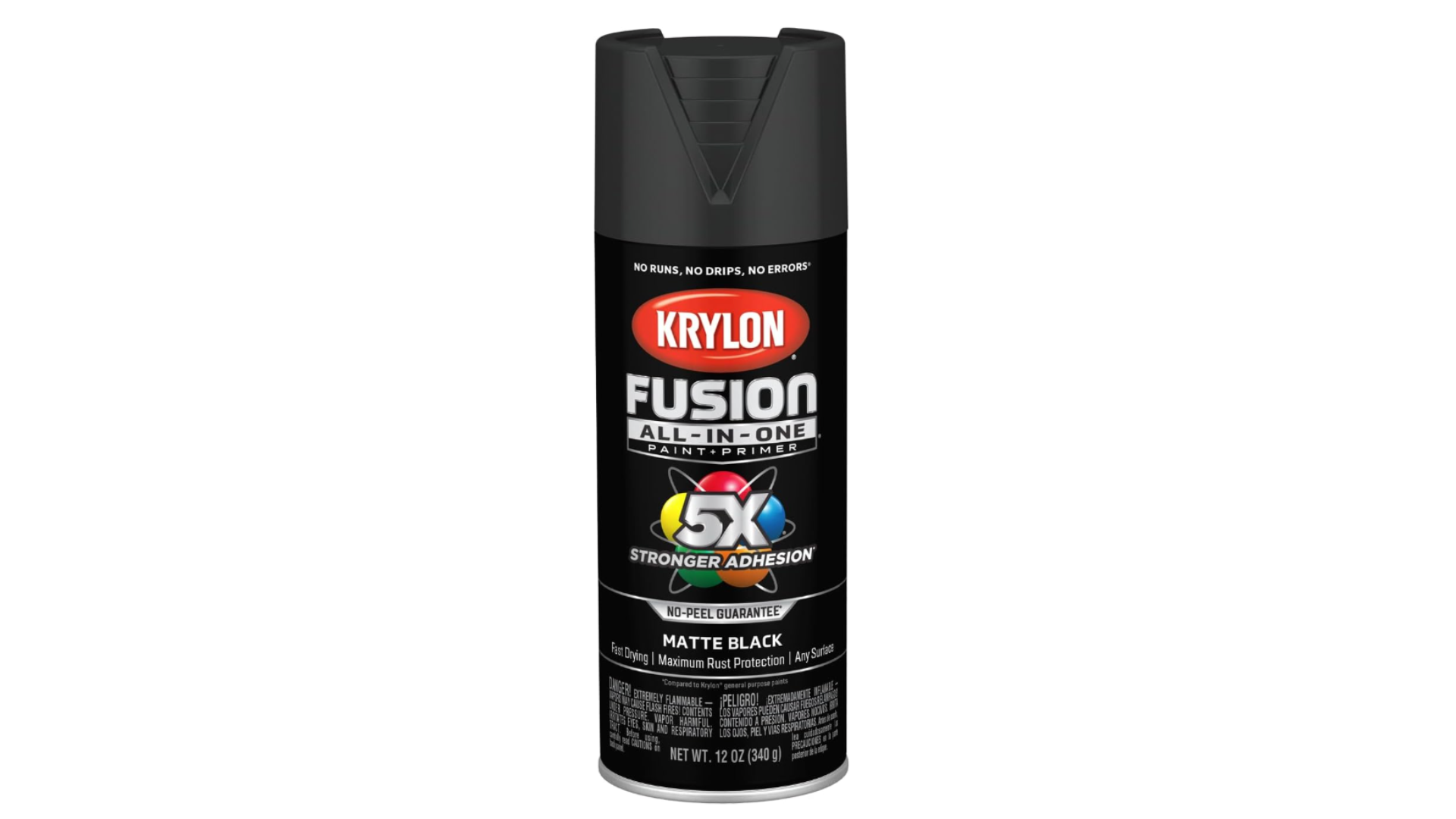
- Works on almost any surface, including plastic, wood, metal, glass, and vinyl, without sanding or priming
- Functions as both primer and paint in one can, saving time and money on the project.
- Features “spray any way” technology that lets you spray from any angle, even upside down.
- Dries to the touch in 20 minutes and can be handled in just 1 hour
- One 12-oz can covers up to 25 square feet and offers strong rust protection for outdoor items
The Complete Guide to Painting Plastic
In this, I’ll walk you through the exact process of painting plastic from start to finish, ensuring you get professional-looking results even on your first try.
Essential Tools & Materials
| Category | Items | Purpose |
|---|---|---|
| Cleaning Supplies | Dish soap, Isopropyl alcohol, Clean rags | Removes dirt, oils, and residue |
| Sanding Tools | Fine sandpaper (180-220 grit), Sanding blocks | Creates texture for paint adhesion |
| Primers & Paints | Plastic-specific primer, Acrylic or spray paint for plastic | Helps paint bond to plastic |
| Application Tools | Small/medium brushes, Paint rollers, Spray paint cans | For applying paint to various surfaces |
| Protective Gear | Gloves, Dust mask, Safety goggles | Protects from fumes and particles |
| Miscellaneous | Masking tape, Drop cloths, Fine grit block | For clean edges and surface protection |
Stock up on these items before you start your project. Most can be found at local hardware stores or craft shops at reasonable prices. The right tools will help you get better results with less effort and mess.
1. Preparation
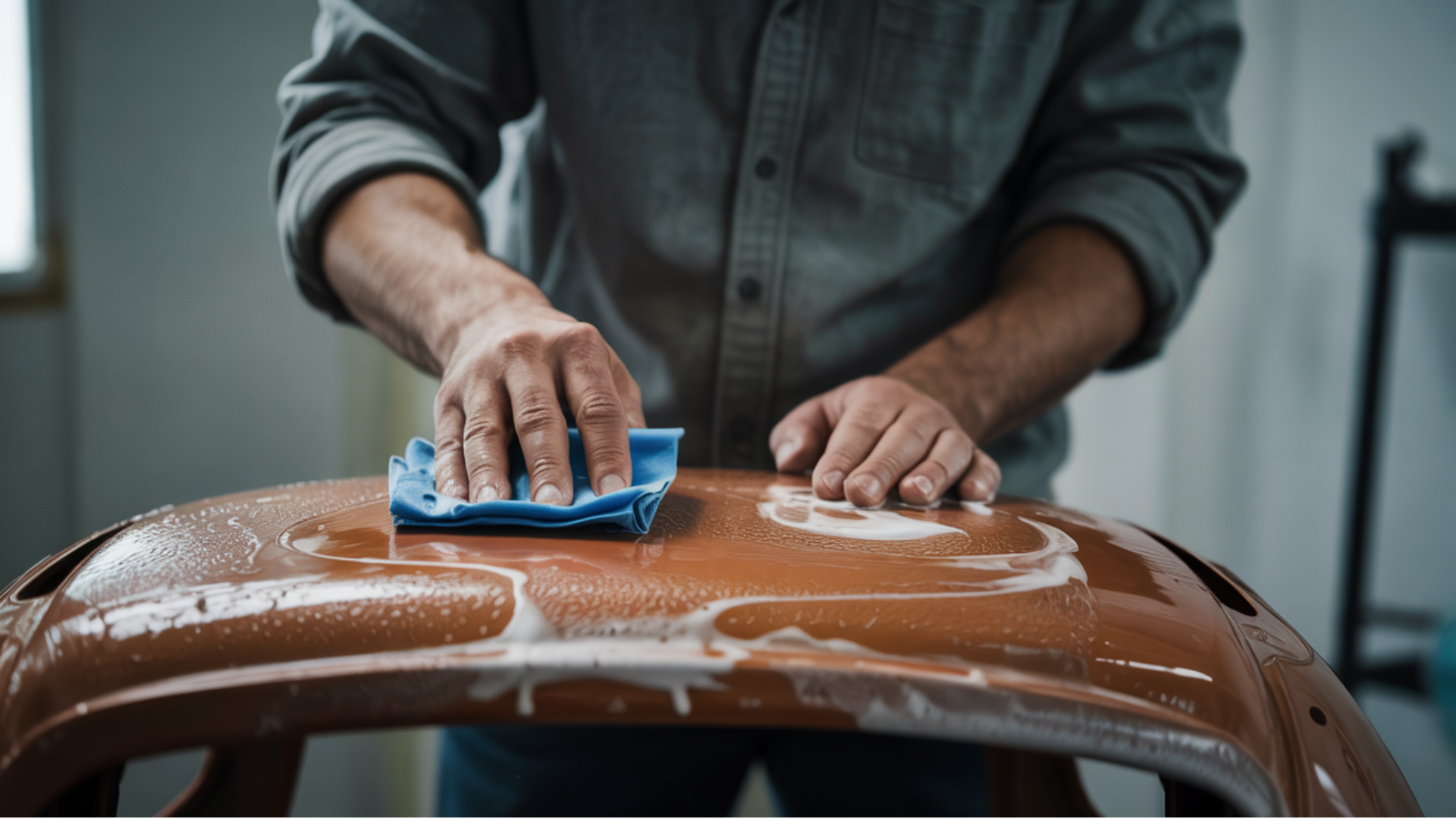
Start by cleaning the plastic surface with soap and water. Remove all dirt, dust, and oils that might be on the item. For extra cleaning, wipe down with isopropyl alcohol.
Next, sand the surface lightly with fine sandpaper (180-220 grit). This creates tiny scratches that help paint stick better. Don’t sand too hard – you just need to rough up the surface a bit.
Last in the prep stage, apply a primer made for plastic. This helps the paint bond to the slick surface. Apply a thin, even coat and let it dry fully according to the package directions.
2. Painting
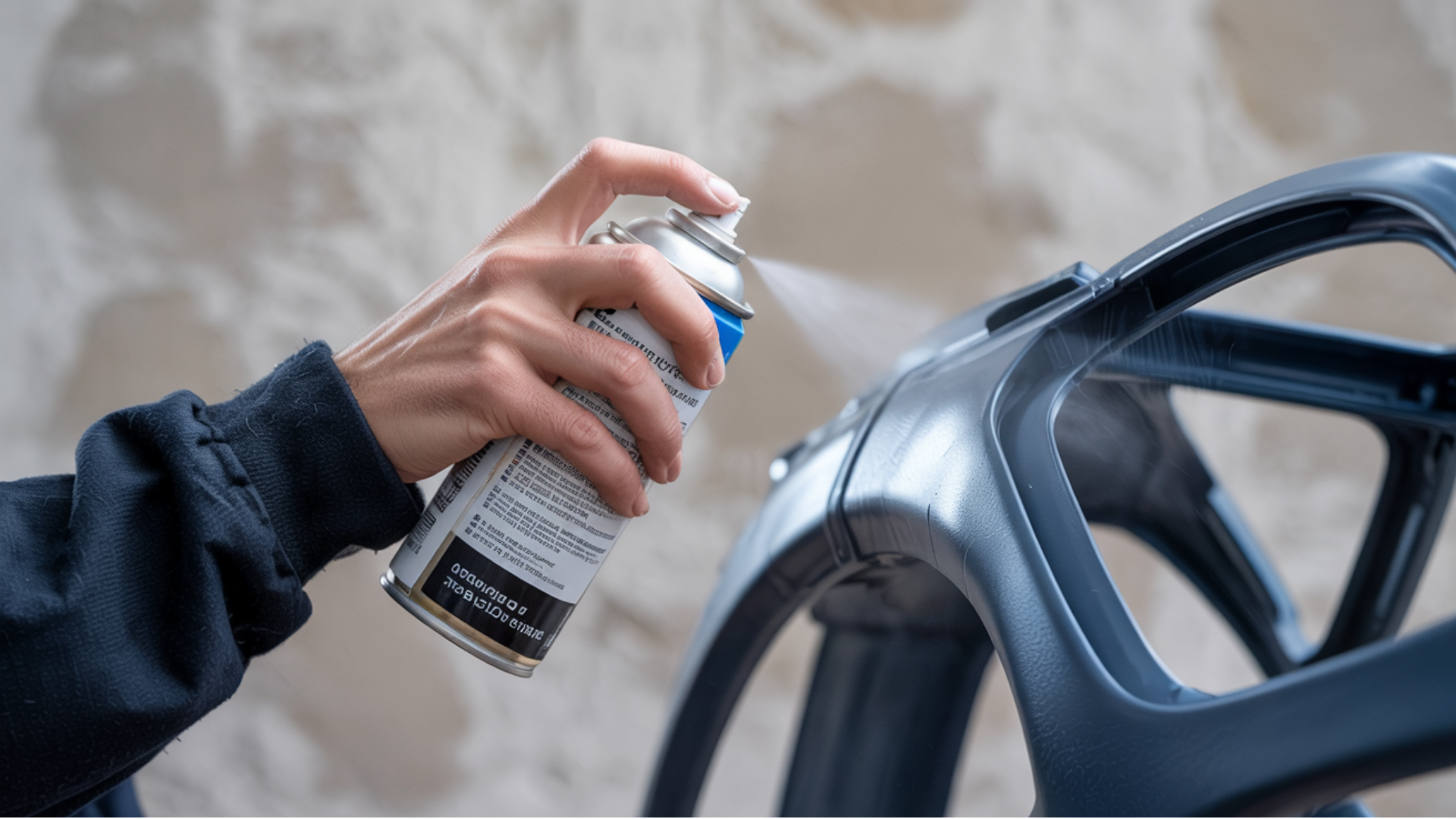
Select a paint that works well on plastic – the options we listed earlier are good choices. Make sure the paint is meant for your type of plastic.
Apply the paint in thin, even coats rather than one thick layer. Thin coats dry better and are less likely to drip or run. Hold the spray can about 8-10 inches from the surface.
Allow each coat to dry before adding the next one. Check the paint can for exact timing, but most need at least 20-30 minutes between coats. Apply 2-3 coats for the best color and durability.
3. Finishing
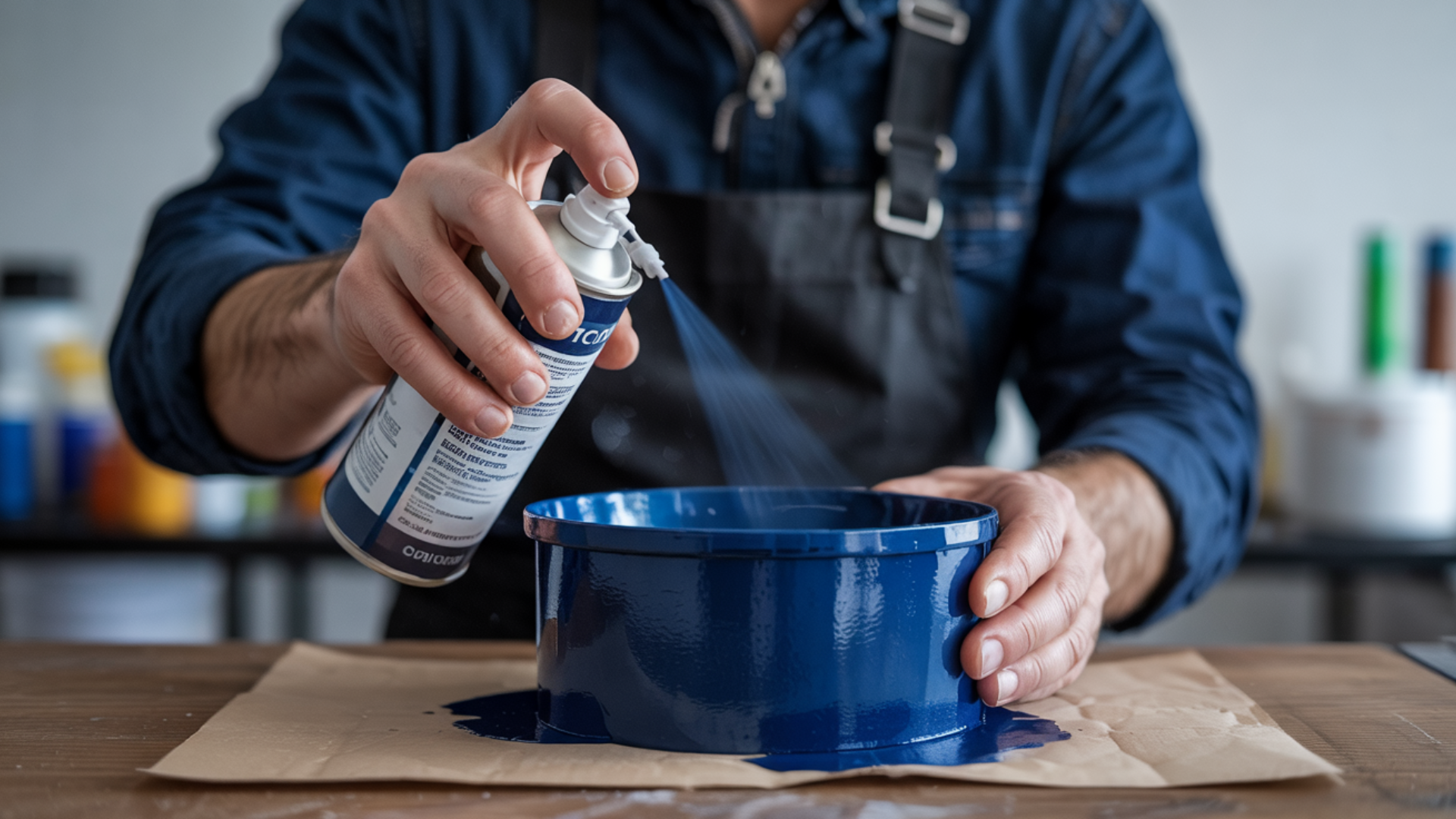
For extra protection, add a clear top coat or sealer after the paint is dry. This helps protect against scratches and makes the paint job last longer.
Let the painted item cure fully before using it. Even though the paint feels dry, it takes time to reach full hardness. Wait at least 24 hours, though 48-72 hours is better for items that will get heavy use.
Creative Ideas for Painted Plastic Projects
Home Decor:
Turn clear plastic bottles into beautiful vases by painting them with solid colors or patterns. Cut the tops off larger bottles to create planters for small herbs or succulents. Paint plastic storage bins to match your room decor instead of hiding them away.
Furniture:
Bring new life to old plastic chairs with a fresh coat of paint. Even inexpensive white plastic chairs can become statement pieces with bright colors or patterns. Paint plastic tables for your patio or kids’ room to match your style without buying new furniture.
Upcycling:
Old plastic toys make great candidates for painting projects. Faded action figures, dull toy cars, or outdated dollhouse furniture can all be updated with paint. Plastic containers from food items can be cleaned and painted for storage or gift boxes.
Crafts:
Create custom buttons or beads by painting small plastic pieces. Make holiday ornaments from plastic bottle caps or other small plastic items. Paint clear plastic sheets and cut them into shapes for suncatchers or window decorations that catch the light.
Conclusion
Painting plastic is a simple way to freshen up items you already own. With the right tools and paints, you can turn old plastic pieces into something you’ll be proud to display or use again.
Remember to prep your surface properly by cleaning and sanding, choose the right paint for your specific plastic type, and apply thin, even coats for the best results.
Whether you’re updating furniture, creating home decor, or giving old toys new life, painted plastic projects offer endless possibilities without breaking the bank.
Ready to start your first plastic painting project? Gather your supplies, pick a small item to practice on, and enjoy the process of transformation.
And when you’ve finished, please share your creations in the comments below—I’d love to see what you’ve made!
Frequently Asked Questions
How Do You Permanently Paint Plastic?
For lasting results on plastic, use acrylic lacquer on rigid items like plexiglas. For flexible plastics such as vinyl, use vinyl ink. Good surface prep helps paint stick better for a permanent finish.
What Type of Paint Is Krylon Fusion?
Krylon Fusion is a multi-surface spray paint that sticks to many materials without needing primer. It works on plastic, wood, metal, glass, and more, making it a useful paint for many projects.
What Is the Difference Between Fusion Paint and Regular Paint?
Fusion paint contains 100% acrylic resin, making it more durable than standard paints. It has a built-in top coat for protection. If you want to distress it, do so when it’s just dry to the touch.

